News
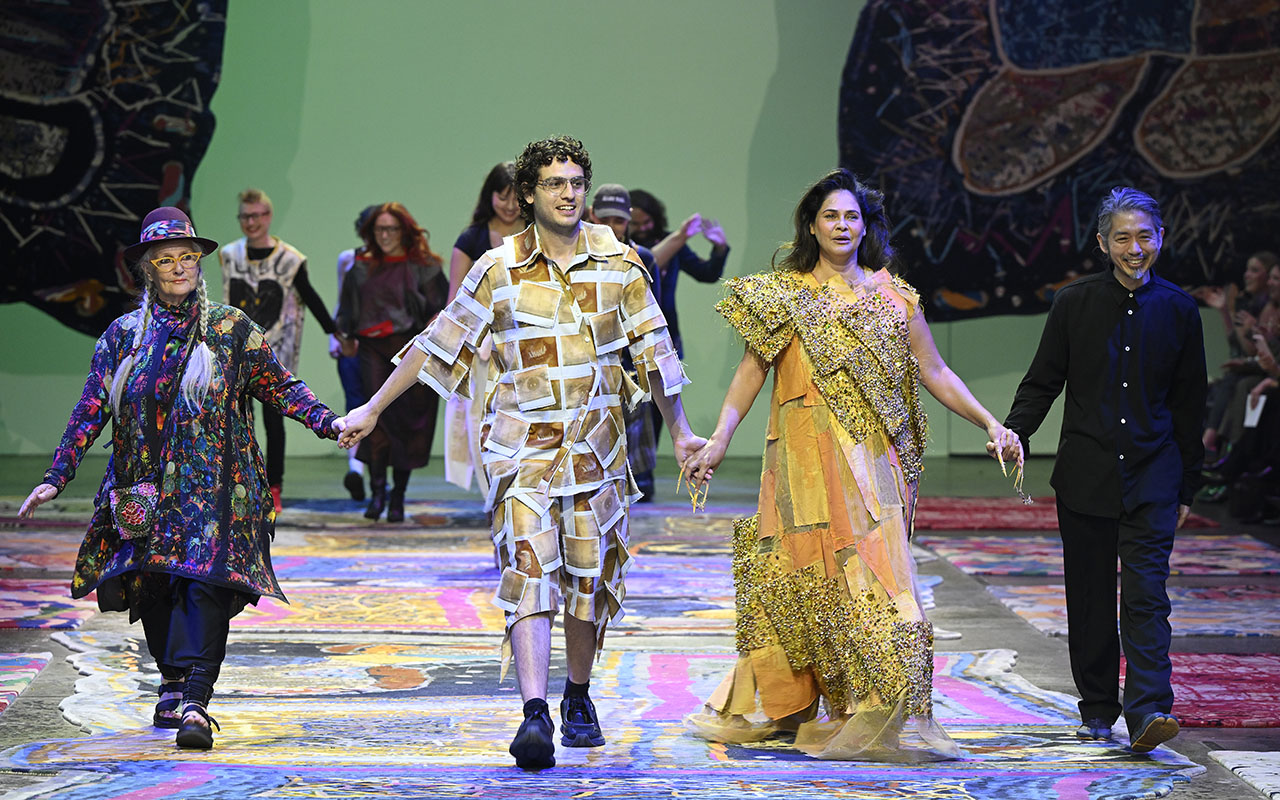
When Jordan Gogos answers the phone for our interview, he’s in the car. ‘I’m on the way to see Akira [Isogawa],” he says.
We had planned this call the week prior but this kind of multitasking is peak Gogos. The 29-year-old is happiest–at his best, even, and to be fair these scenarios make for a much more entertaining conversation–when he’s juggling a thousand balls at once. It’s an approach that also makes it so hard to fit him within a neat definition when it comes to his work. Each ball is a different avenue of creative output: artist, fashion designer, furniture design with a different one in focus at any given time.
“I don’t want to be just a fashion designer,” he explains when I ask him how he manages to navigate all his, ahem, balls. “Sometimes I’m in a furniture setting and I’m talking about making my next couch or a bookshelf. I love just stepping out of that headspace entirely. The truth is, I get bored quickly. I would get so bored just doing fashion but I would also get so bored just doing furniture design. I kind of need both of them.”
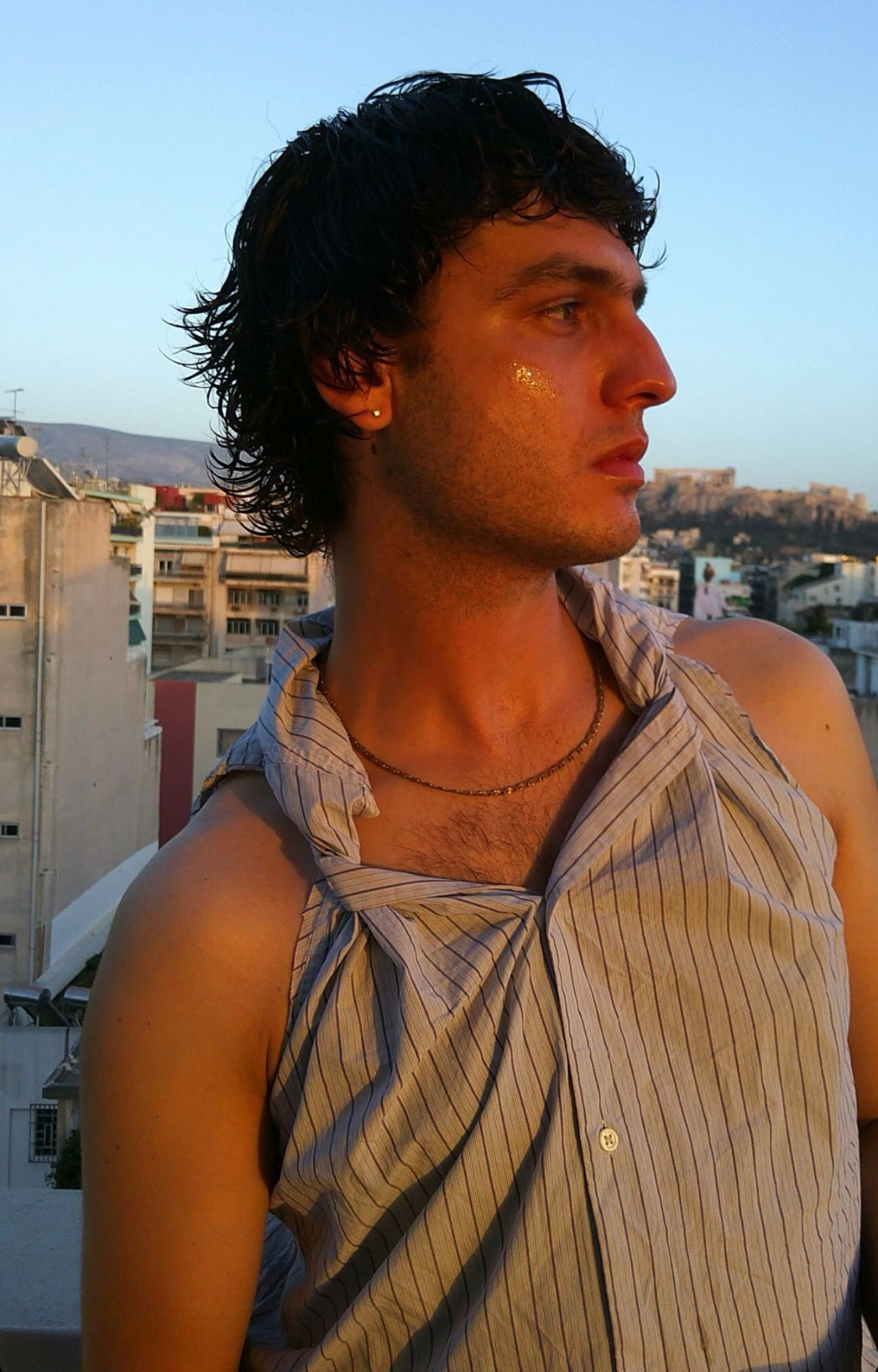
Indeed, the busier the better. “For some sick reason I function on a level that’s just like when there’s 300 things happening, I can do 500 things. And when I’m doing two things I can’t do any of them,” Gogos explains. He’s a week out from showing at Australian Fashion Week yet also already planning another show in Greece for Athens Fashion Week. “You want to come to Greece?” he throws out. Sure, I say.*
“I’m going to show in Athens two weeks after my show here in Sydney. So while I’ve been doing this, I’ve also been doing a Greek collection as well. It’s only blue and white.” It’s a moment of pure Gogos: energetic, a little random, 10 steps ahead of everyone around him and still looking another 10 beyond that. But this is also why his work draws such attention. Even if it is in the context of a runway, or a design fair, it manages to merge with his other fields. Context, in the hands of Gogos, is a chameleon. “It’s always about context,” he says.
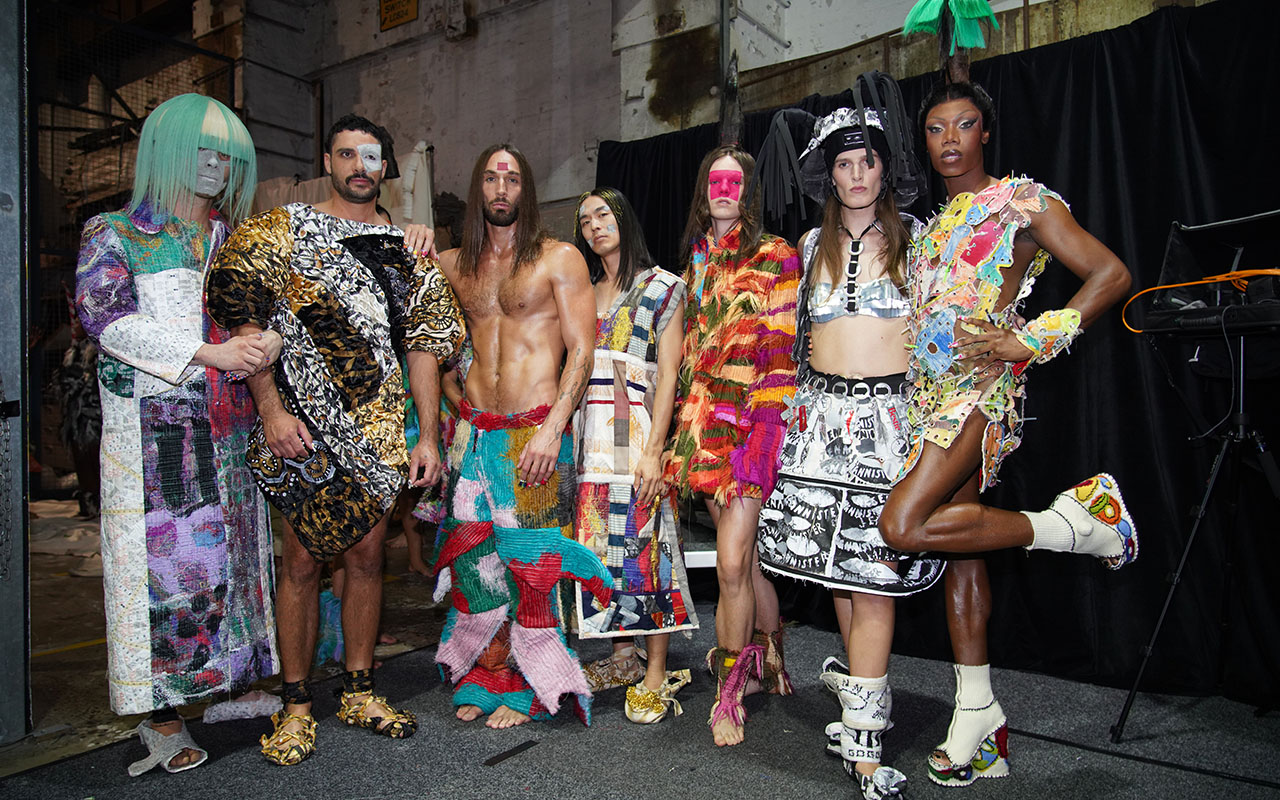
So after three years of being one of the most talked-about creatives in the country, does he think that critics have finally come around to the realisation that the boundary between his outlets just doesn’t exist anymore? “I think so. I hope so!” Perhaps upon seeing his latest collection that took place at Australian Fashion Week, they might begin to understand the bigger vision that is Iordanes Spyridon Gogos.
Created in partnership with Designer Rugs, “Chapter Four: The Woven Trojan Horse” was, like the title suggests, the fourth runway that Gogos has shown at Carriageworks and features actual rugs crafted lining both the runway and the walls. “The show had 200 square metres of custom rugs designed by me,” Gogos explains. “So I’ve got these monolithic 4×4 rugs on the walls. Then I’ve got three nine metre long rugs on the floor.” Beyond decoration purely for Fashion Week, these custom designs are also available to purchase online from Designer Rugs’ website.
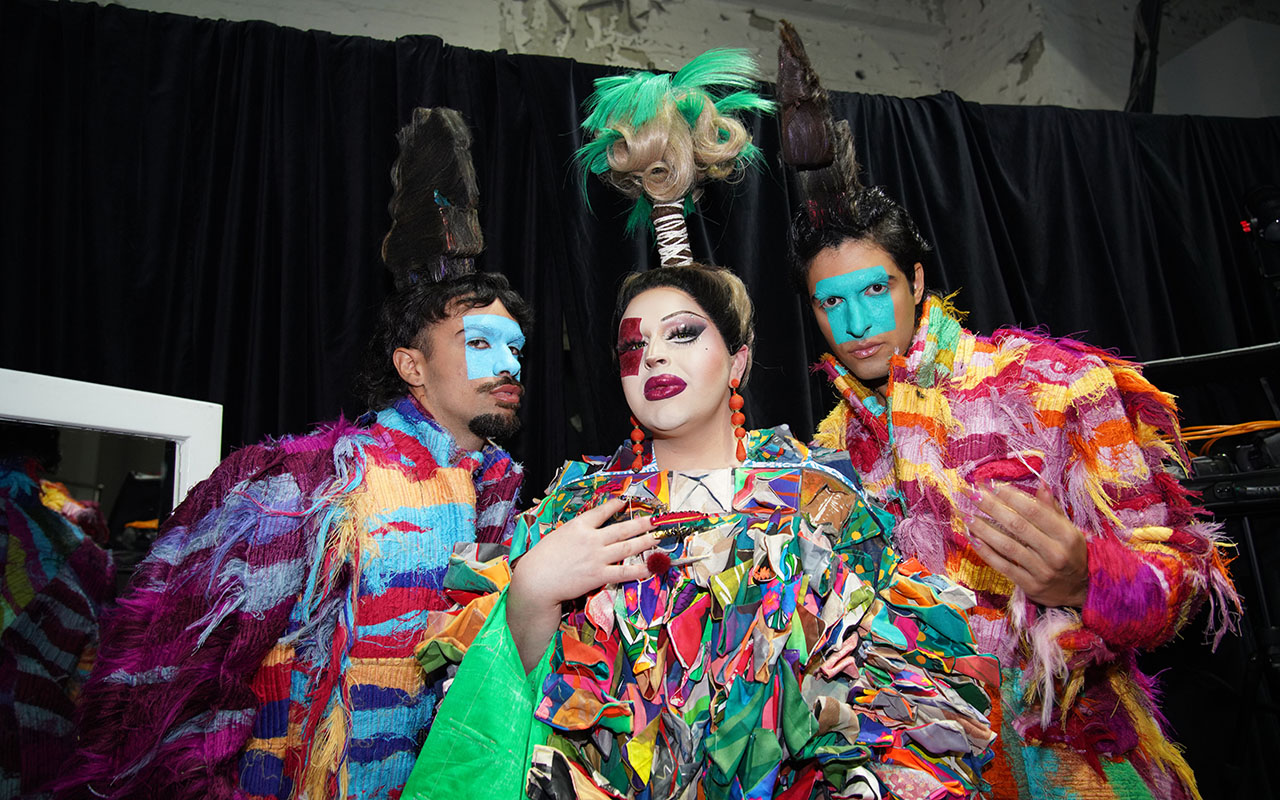
But deeper still, it could also be argued that the most recent show is the one that confirms just how much Gogos is the sum of his parts. The collection featured a mix of the sculptural, conceptual creations that have become Gogos’ signatures. Fabrications are compressed scraps, upcycled materials that are smashed together in a jigsaw of colour and texture that it’s hard to focus on one detail.
Some were teased out to look like feathers, others tightly packed and woven to look like a chaotic interpretation of tweed. One enormous dress crafted from a rug–“It’s literally a rug with three holes in it and it looks so regal, we put my friend the photographer Jordan Drysdale in it and he looks like Prince Charming,” says Gogos–with a sprinkle of more commercially viable pieces in between. There was a coat made entirely from resourced tags that he had picked from the personal collection of industry legend Linda Jackson. “I did three looks with her, and one of the looks is thousands and thousands of tags. She said to me, ‘they’re 42 years old’, and I’ve stitched them all together into a coat.”
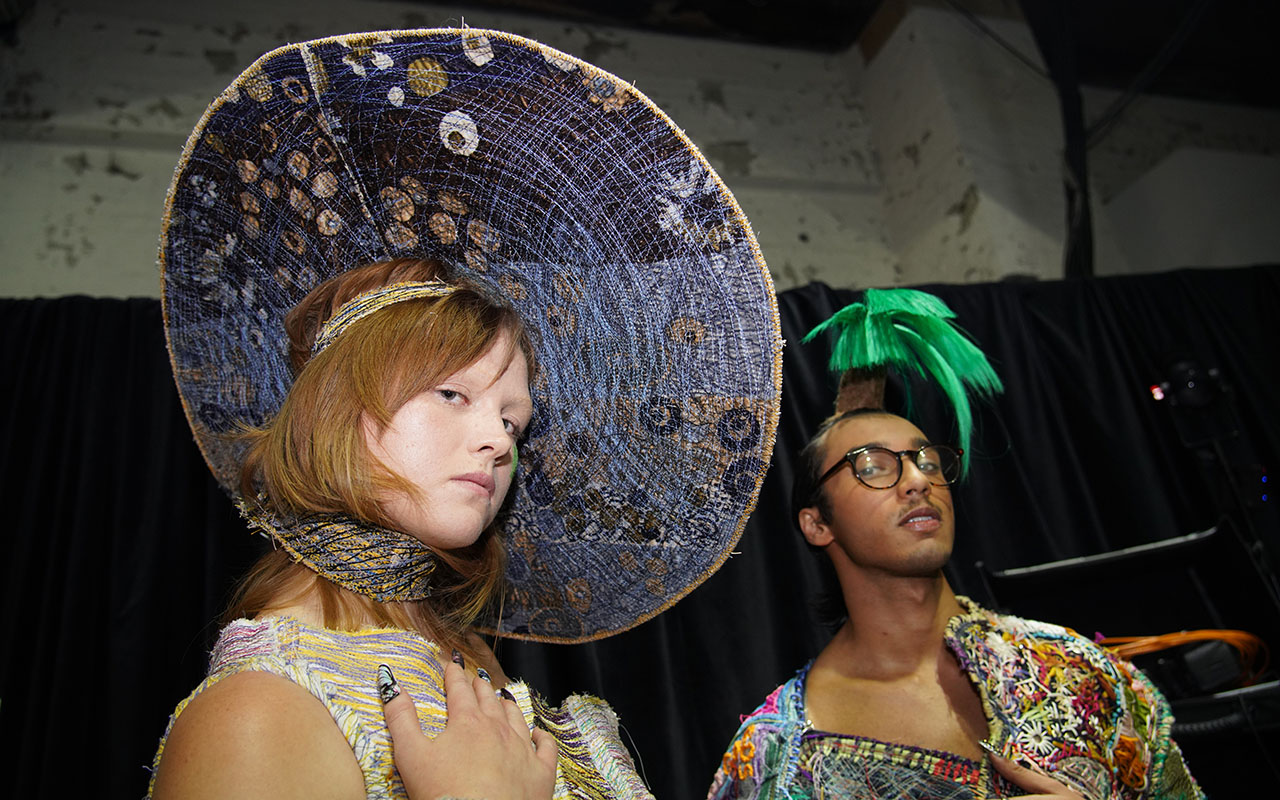
Jackson wasn’t the only legend that Gogos worked with this year, either. He had five looks made in collaboration with Akira Isogawa, others with Indigenous designer Paul McCann, artists Nell and shoemaker Darren Bischoff. One that he was particularly excited about was the collaborative pieces made with fashion icon Jenny Bannister. A key figure of the 70s fashion scene, known for surreal and radical designs (one dress, Je Suis Mod was made using vinyl records), Bannister is arguably the blueprint for many of today’s art/fashion hybrids.
“Jenny Bannister is so overlooked as a collaborator, but she’s an icon, a massive icon,” says Gogos. “She was on the Australian stamp, the Australian stamp alongside Collete (Dinnigan) and Akira and Carla Zampatti when the Icon series came out. She hasn’t been on runways for years, but she’s one of the most collected artists in the institutions.”
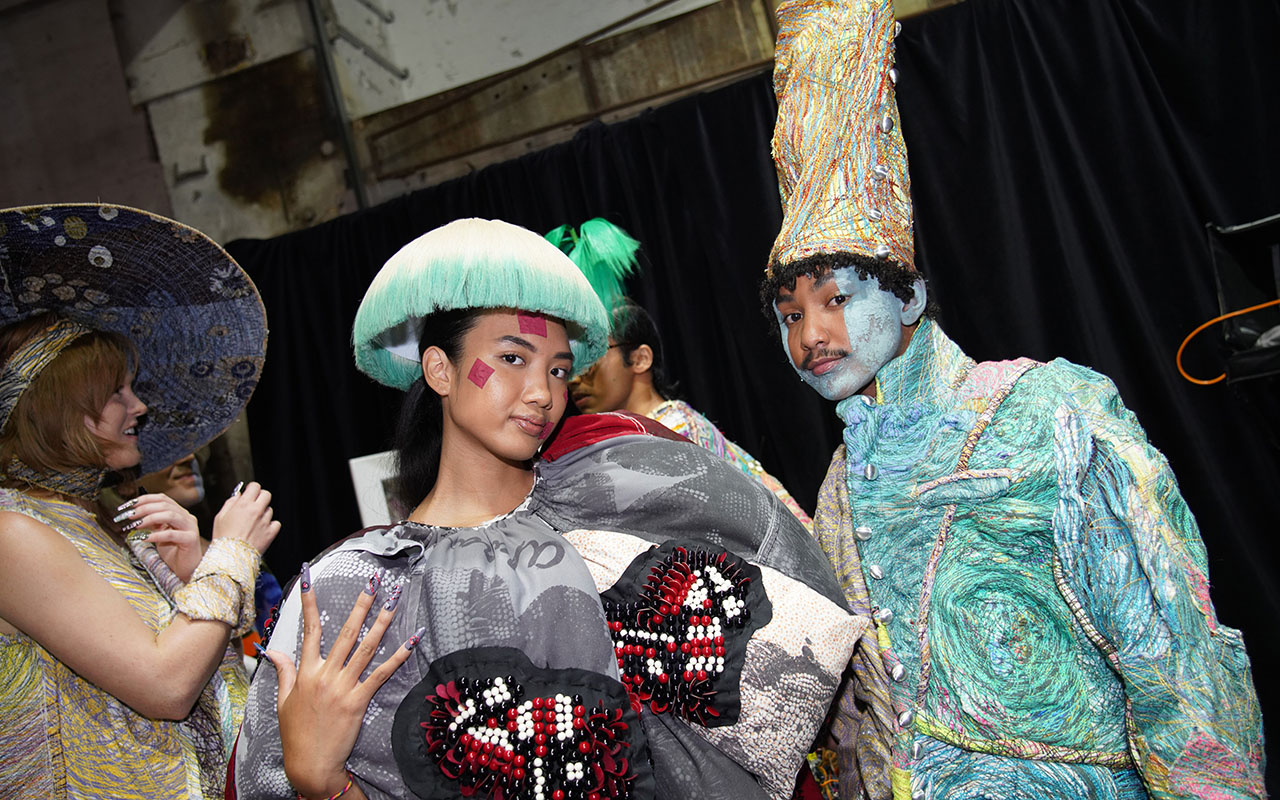
Despite the big names involved and the hype that surrounds each show he does, Gogos says that the first half of the year was still a tough one.
“I didn’t have money for about the first month of the year at all,” he says. “And when I signed on [to Australian Fashion Week]I had no sponsorships, nothing. Then I won the National Design Award in Melbourne. Then a private collector bought something. So then I had a little bit of money.”
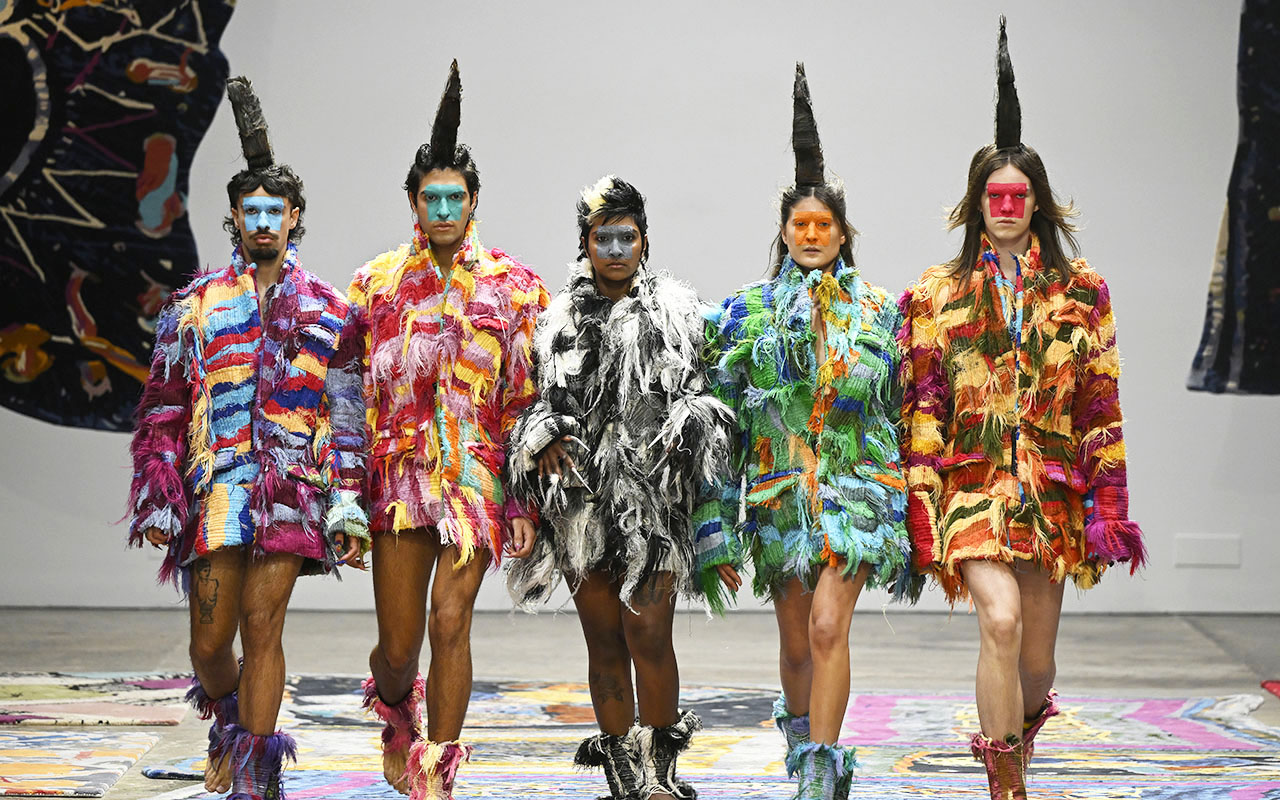
But akin to his ball-juggling skills, Gogos has the ability to thrive in conditions that might see others throw their hands up and call it a day. Perhaps this is the artist in him. Or the designer. That tenacity to work with what one has to literally spin gold out of thin air. “I just literally worked with what I had and I just literally beat fabrics with my hand and a needle. It took me back to the first show so much, it felt so free.”
*I did not make it to Greece, unfortunately.